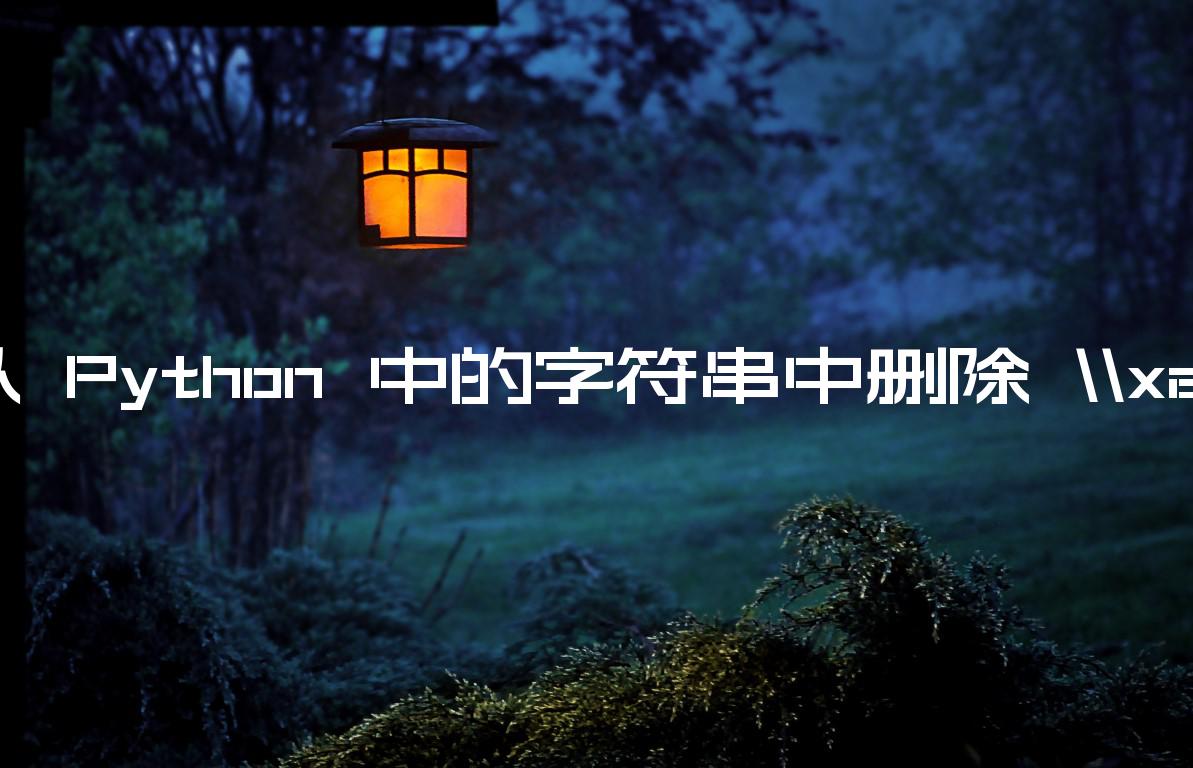在 Python 中从字符串中删除 \xa0
Remove \xa0 from a string in Python
使用该unicodedata.normalize()方法从字符串中删除 \xa0,例如
result = unicodedata.normalize('NFKD', my_str)。该unicodedata.normalize
方法通过将所有兼容字符替换为它们的等效字符来返回所提供的 unicode 字符串的正常形式。
主程序
import unicodedata my_str = 'hello\xa0world' # ✅ remove \xa0 from string using unicodedata.normalize() result = unicodedata.normalize('NFKD', my_str) print(result) # 👉️ 'hello world' # ---------------------------------------- # ✅ remove \xa0 from string using str.replace() result = my_str.replace('\xa0', ' ') print(result) # 👉️ 'hello world' # ---------------------------------------- # ✅ remove \xa0 from list of strings my_list = ['hello\xa0', '\xa0world'] result = [string.replace('\xa0', ' ') for string in my_list] print(result) # 👉️ ['hello ', ' world']
该
\xa0字符表示不间断空格,因此从字符串中删除它的方法是用空格替换它。unicodedata.normalize方法返回所提供的 Unicode 字符串的
标准形式。
第一个参数是form–NFKD在我们的例子中。正常形式NFDK
用它们的等价物替换所有兼容字符。
由于该
\xa0字符的等价物是空格,因此它会被空格替换。如果您在使用NFKD表单时得到意想不到的结果,请尝试使用
NFC,NFKC和之一NFD。
该NFKC形式首先应用兼容性分解,然后应用规范分解。
主程序
import unicodedata my_str = 'hello\xa0world' result = unicodedata.normalize('NFKC', my_str) print(result) # 👉️ 'hello world'
或者,您可以使用该str.replace()方法。
使用该str.replace()方法从字符串中删除 \xa0,例如
result = my_str.replace('\xa0', ' ')。该str.replace()方法将用空格替换所有出现的\xa0(不间断空格)字符。
主程序
my_str = 'hello\xa0world' result = my_str.replace('\xa0', ' ') print(result) # 👉️ 'hello world'
由于\xa0字符代表一个不间断的空格,我们可以简单地用空格替换它。
str.replace方法返回字符串
的副本,其中所有出现的子字符串都被提供的替换项替换。
该方法采用以下参数:
| 姓名 | 描述 |
|---|---|
| 老的 | 字符串中我们要替换的子串 |
| 新的 | 每次出现的替换old |
| 数数 | 只count替换第一次出现的(可选) |
请注意,该方法不会更改原始字符串。字符串在 Python 中是不可变的。
从 Python 中的字符串列表中删除 \xa0
从字符串列表中删除\xa0字符:
- 使用列表理解来遍历列表。
- 在每次迭代中,使用该
str.replace()方法将出现的 替换
\xa0为空格。 - 新列表中的字符串将不包含任何
\xa0字符。
主程序
my_list = ['hello\xa0', '\xa0world'] result = [string.replace('\xa0', ' ') for string in my_list] print(result) # 👉️ ['hello ', ' world']
我们使用列表理解来迭代列表。
列表推导用于对每个元素执行一些操作,或者选择满足条件的元素子集。
\xa0在每次迭代中,我们用空格替换出现的字符并返回结果。
